
Frederikstad
Not a town or village, not even a settlement, but its a place of interest thus I decided to include it in my collection. Position: 26.50733°S 27.1518°E. Well, it was supposed to be a town, the plans had been made but it never happened. It was named after Frederik Wolmarans, see the grave inscription in the picture lower down, it was him.
Railway station
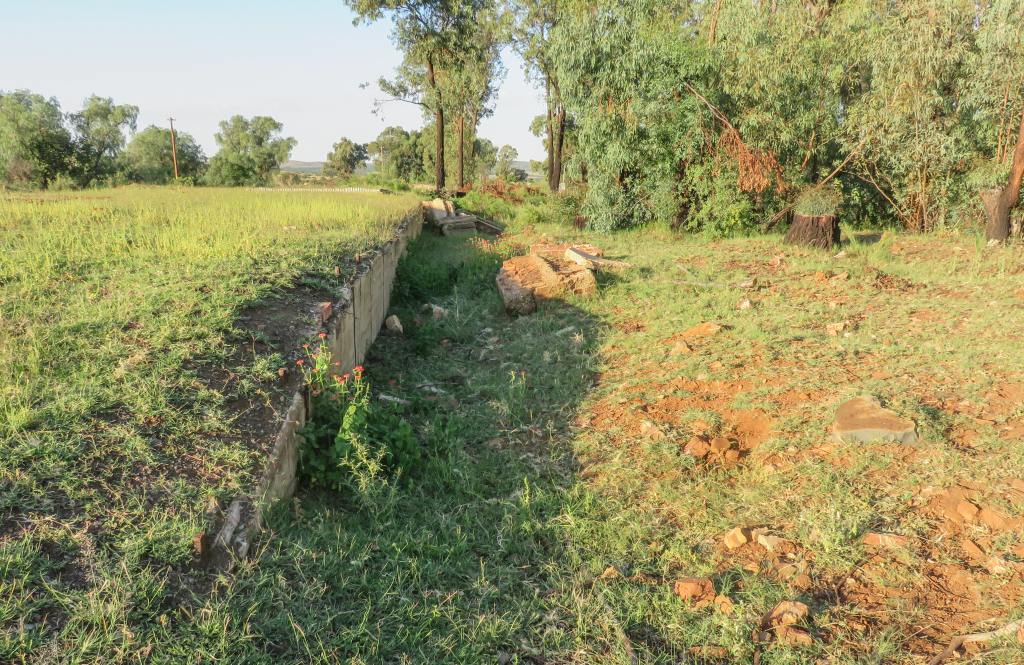
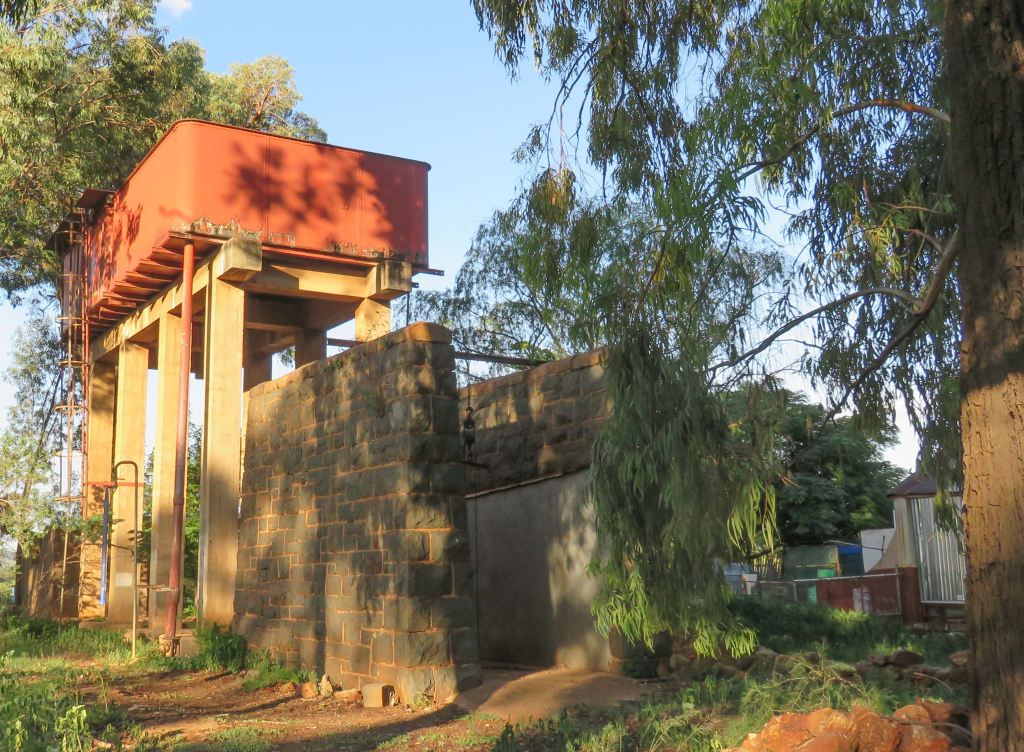 The railway station is no more and in fact the tracks have disappeared. The whole line has been rerouted past what used to be the town. The former rail bed can clearly be seen on Google Earth, in fact it looks like the track has been changed twice before. The platform is still visible and the water tank still exists. Construction of the tank is using rivets to hold the plates together, a technology that was replaced by welding the plates together in about 1950. Thus the tank would be of that age at least.
The railway station is no more and in fact the tracks have disappeared. The whole line has been rerouted past what used to be the town. The former rail bed can clearly be seen on Google Earth, in fact it looks like the track has been changed twice before. The platform is still visible and the water tank still exists. Construction of the tank is using rivets to hold the plates together, a technology that was replaced by welding the plates together in about 1950. Thus the tank would be of that age at least.
It looks like it is still in use for the water supply of the houses.
Voortrekker graves
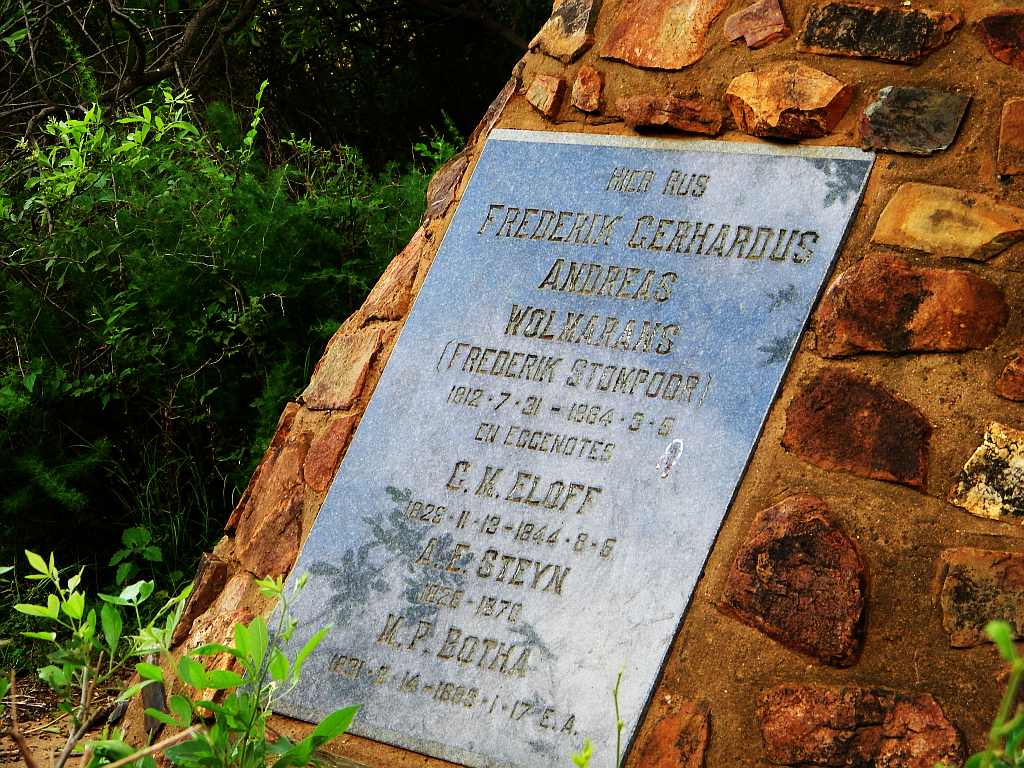
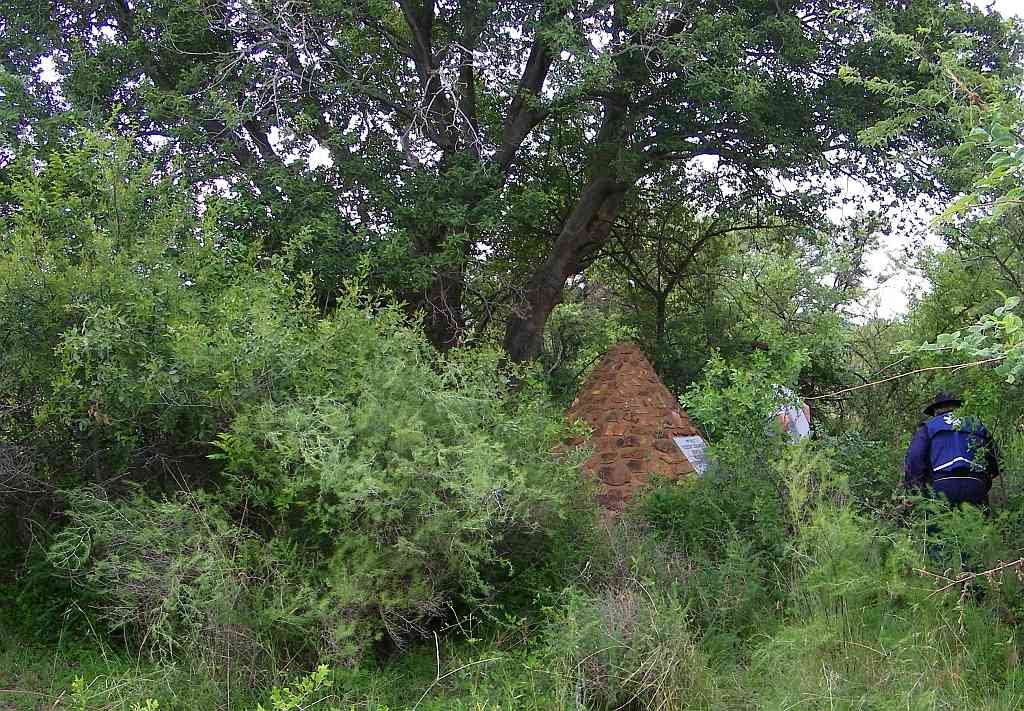 There is a small graveyard about 4 km out of Frederikstad on the D335. A pyramid has been erected in the middle attached to it a plague with the names of some of the people buried here. Top of the list is Frederik Gerhardus Andreas Wolmarans (Frederik Stompoor) 1812.7.31 - 1884.3.8. Now that nickname Stompoor I have come across before, he is well known for something, I just can't put my finger on it. It needs a bit more search and I will update once this has been done.
There is a small graveyard about 4 km out of Frederikstad on the D335. A pyramid has been erected in the middle attached to it a plague with the names of some of the people buried here. Top of the list is Frederik Gerhardus Andreas Wolmarans (Frederik Stompoor) 1812.7.31 - 1884.3.8. Now that nickname Stompoor I have come across before, he is well known for something, I just can't put my finger on it. It needs a bit more search and I will update once this has been done.
Battle of Frederikstad
The battle of Frederikstad involved the British on the one side and Boer commandos from the Transvaal and the Free State. The background to it is that the British had moved out of Krugersdorp along the railway line to Potchefstroom and Klerksdorp. At Frederikstad they set up camp. Boer forces under Generaal Liebenberg opposed them. It happened that Christiaan de Wet from the Freestate was present helping in the endeavour.
The British forces were surrounded and it was thought a good idea to cut them off from their water supply. That supply came from under the railway bridge to the east of the station. And this was where the main action of the battle was, also resulting in the most casualties.
The Boers took their position over night and surprised the water fetching British in the morning. The easiest is to let PJ du Toit take over the story, he was there and an eyewitness to the events:
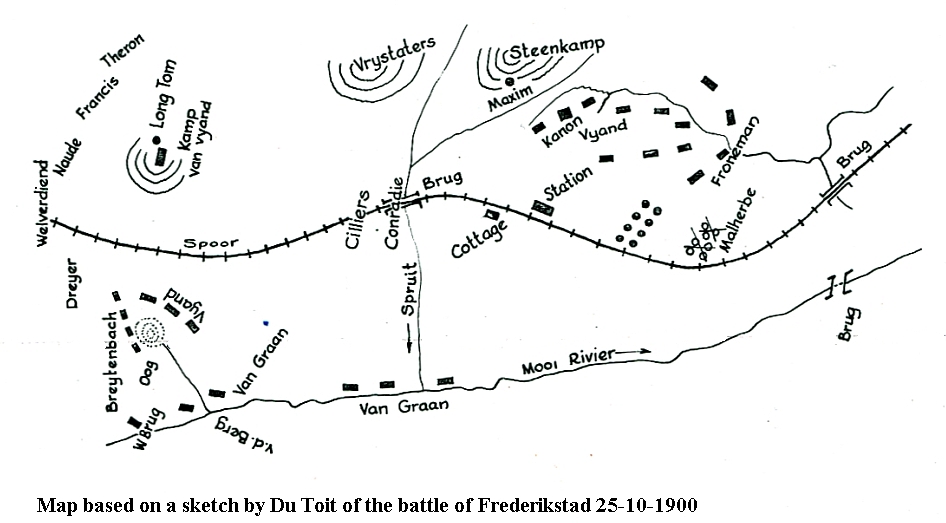
25.10.1900: At 6 a.m. we rode out and could already hear the roaring cannons. The bridge had been taken that night by Conradie, Cilliers and Wessels. Last night late, Generals Liebenberg and Froneman were with them at Wolmerans Brug and it was then and there decided to take it. Louis Wessels had inspected it, made a sketch, shown it to De Wet and he thought he could hold it. Gen.Liebenberg had admonished them not to hold it if they thought they could not, and on return to the wagon a report was sent to De Wet to be on his guard, and informing him that the men had gone in.
What an anxious time we are spending on the kopje, watching the continued bombardment of the bridge, where some of my best friends are defending their very lives. Now we see some infantry storming a koppie close by, but we are confident that our men will hold on, if only till dark, when they might be able to effect a safe retreat. They are subjected to a crossfire now.
O horrors! What do we see: some dark objects moving slowly from Welverdiend. They are cattle grazing in the distance. I had another good look and sure enough there is a big laager moving slowly towards the beleaguered camp with a mounted troop leading the advance. Already the scouts have joined hands. Poor people at the bridge! My mind was agitated, tears were flowing from my eyes and my whole body shook as I took my pen to report this to De Wet. Where were Theron, Francis and Van der Merwe? Why no report from any of them or from De Wet? Our men were still holding on bravely, but o Good Lord, if they are surrounded!
It was about 12 o'dock. After arrival of the reinforcements no time was lost in trying to dislodge our men at the bridge. They were stormed and not wishing; to fall into the hands of the enemy jumped out and made for the river, a distance of about 6 000 yds, over an open flat. There most were shot dead with shrapnel, lyddite and Lee Metford, wounded or caught, only a comparative small number escaping unhurt.
Schuster went in with the ambulance, but was not allowed to do anything. From information gained two were shot, 13 wounded and six taken prisoner. Some of our men have come out, some wounded, some (5) missing, including Conradie.
Of Klerksdorp 51 went in. I am trying to get a complete list of the names. I am glad my friend Bassie van Niekerk is only wounded. Poor Pieter Brits is gone.
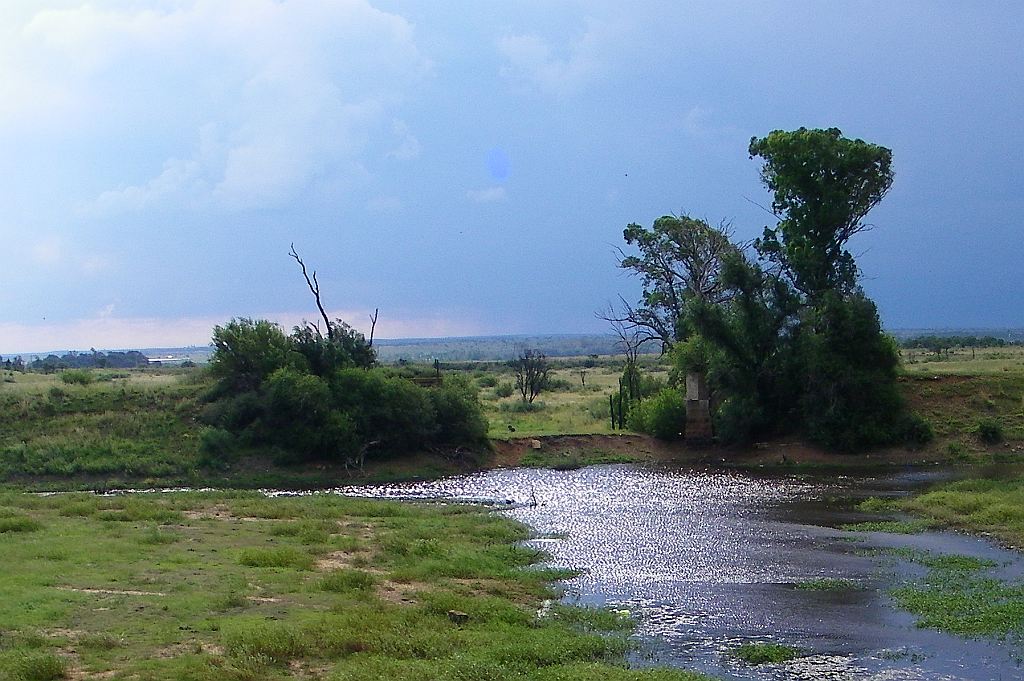
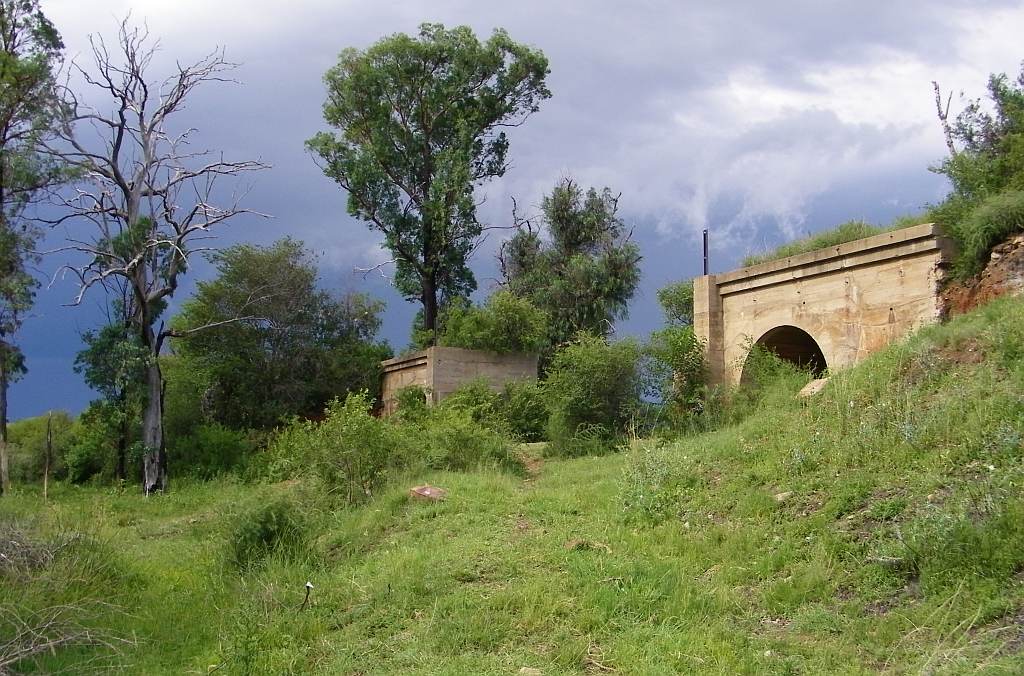 What a sad day for Klerksdorp. We have lost heavily and most of our best men, and it has cast a gloom over the whole camp. What evil will it not bring over Klerksdorp? If we had succeeded, all the laurels and thanks would have gone to Klerksdorp. We did not, and are deeply affected. The Free State must have lost heavily too, and some of De Wet's best men are gone. We have not heard from him yet.
What a sad day for Klerksdorp. We have lost heavily and most of our best men, and it has cast a gloom over the whole camp. What evil will it not bring over Klerksdorp? If we had succeeded, all the laurels and thanks would have gone to Klerksdorp. We did not, and are deeply affected. The Free State must have lost heavily too, and some of De Wet's best men are gone. We have not heard from him yet.
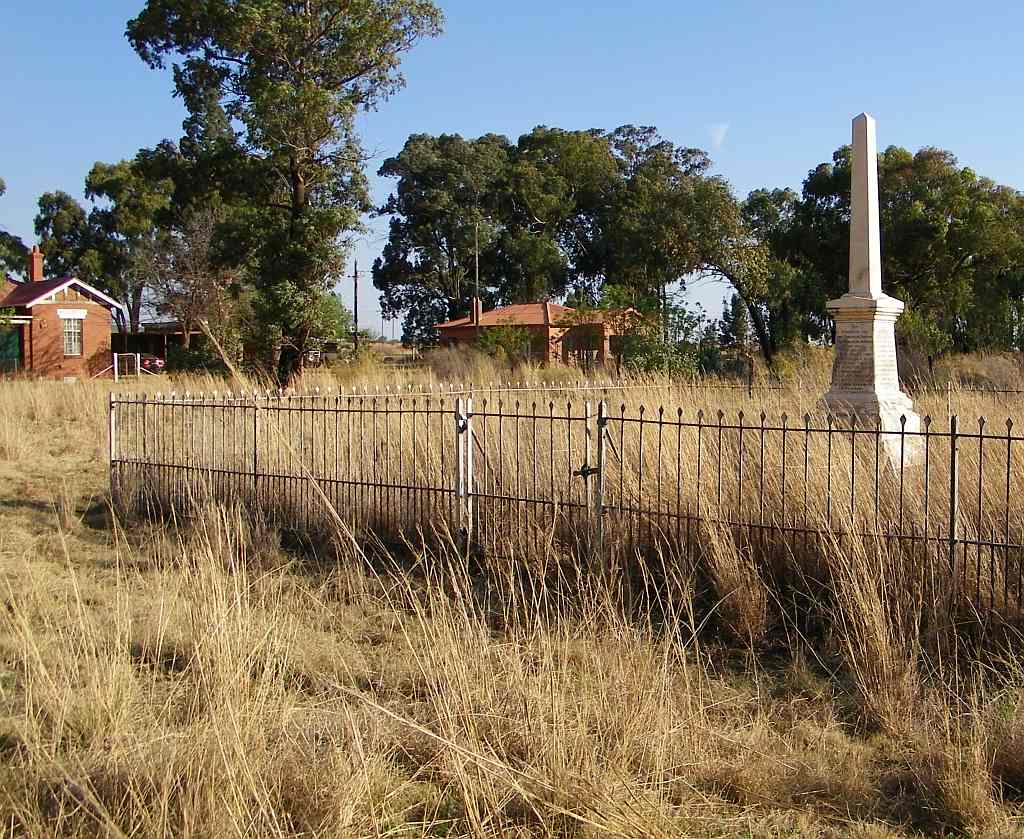
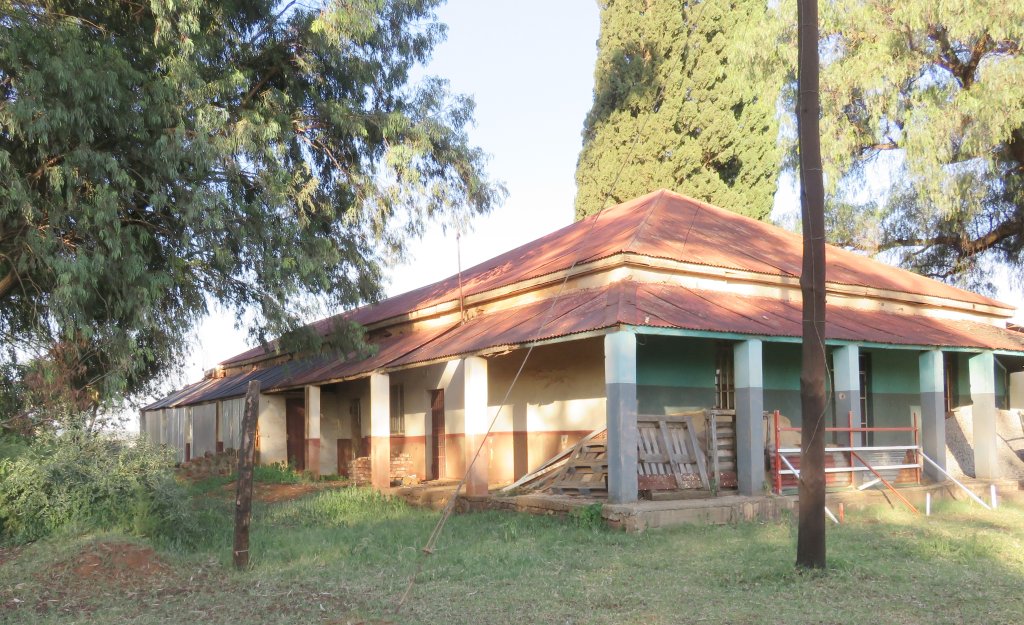 The two picture show the bridge, its steelwork has been removed. And below on the left the picture shows the monument erected in Frederikstad to this event in memory of the boers killed in that battle. On the right is the hotel that was used by the British officers.
The two picture show the bridge, its steelwork has been removed. And below on the left the picture shows the monument erected in Frederikstad to this event in memory of the boers killed in that battle. On the right is the hotel that was used by the British officers.
P.S.: just found this reference to a train disaster at Frederikstad in 1900. It was a military train , with 13 people killed and 39 injured. It's not mentioned whether this was as a result of military action, I'll have to do some searching. Come back to this page a few weeks from now (4-10-14) to get the answer.
Rail Accident
Yes, found it: This website contains the information I was looking for.
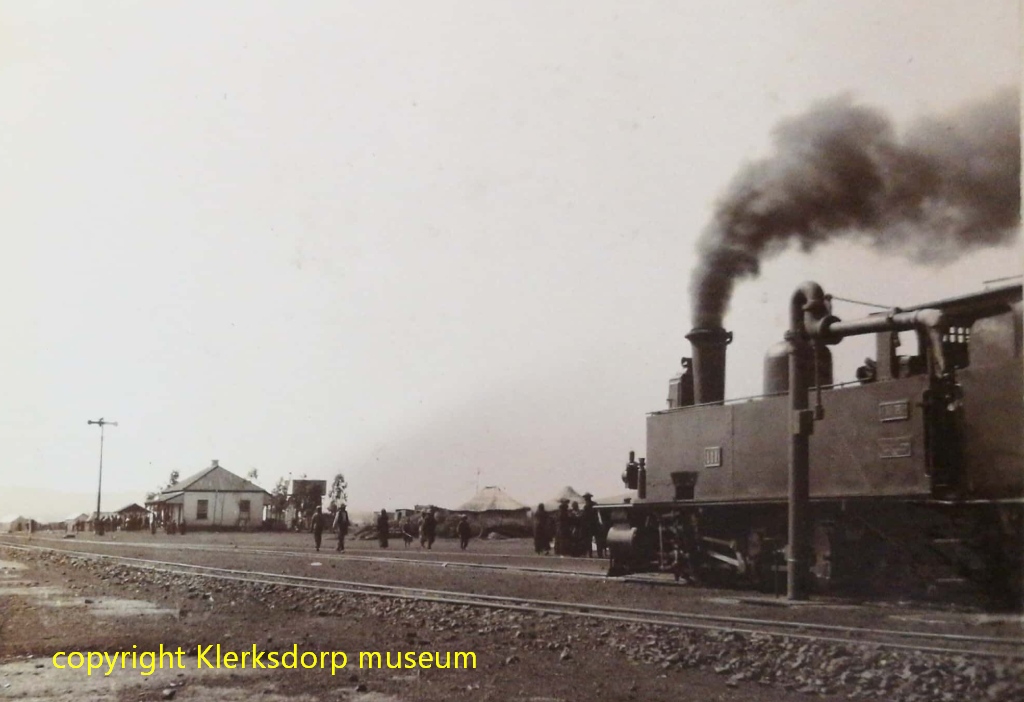 The accident happened on the 30 July 1900, thus some time before the battle. A military train loaded with supplies and military personal was travelling towards Frederikstad and got derailed in one of the curves going down hill. 13 people got killed, including the engine driver, and forty-one injured.
The accident happened on the 30 July 1900, thus some time before the battle. A military train loaded with supplies and military personal was travelling towards Frederikstad and got derailed in one of the curves going down hill. 13 people got killed, including the engine driver, and forty-one injured.
On inspection it was found that the derailment was due to sabotage. Some of the fish-plates had been unscrewed and the rail loosened, but all concealed such that it was not obvious to cursory inspection. Some yeomanry scouts had been ordered to inspect the line as they advanced but failed to notice the sabotage.
What is a fish-plate? Its the piece of flat bar that connects between the rails and holds them together.
The picture on the right shows the station during the Boer War. The house in the back is most likely what is shown as the station on the battle map above. Thus the train would be facing west, towards Potchefstroom.
References:
Ref 1>: P.J.Du Toit "Diary of a National Scout 1900 - 1902", Human Science Research Council 1974
Ref 2.: "Standard Encyclopaedia of Southern Africa", Nasou Limited, 1972
Ref 3.: Elize Sonja van Eeden, "DIE GESKIEDENIS VAN DIE GATSRAND-VANAFDIE VESTIGING VAN DIE TREKKERGEMEENSKAP
OMSTREEKS 1839 TOT DIE PROKLAMERING VAN CARLETONVILLE IN 1948", Verhandeling goedgekeur vir die graad MAGISTER ARTIUM in GESKIEDENIS in die FAKULTEIT LETTERE EN WYSBEGEERTE van die POTCHEFSTROOMSE UNIVERSITEIT VIR CHRISTELIKE HOER ONDERWYS
Ref 4: Christiaan Rudolf de Wet, "Three Year's War", Charles Scribner's Son, New York, 1902